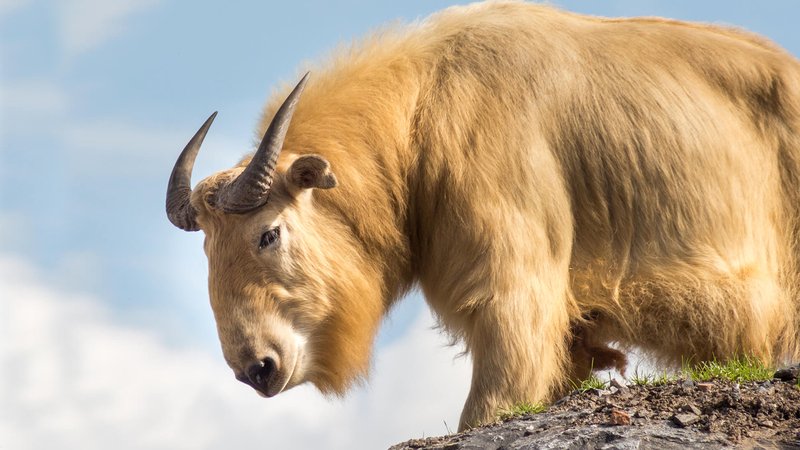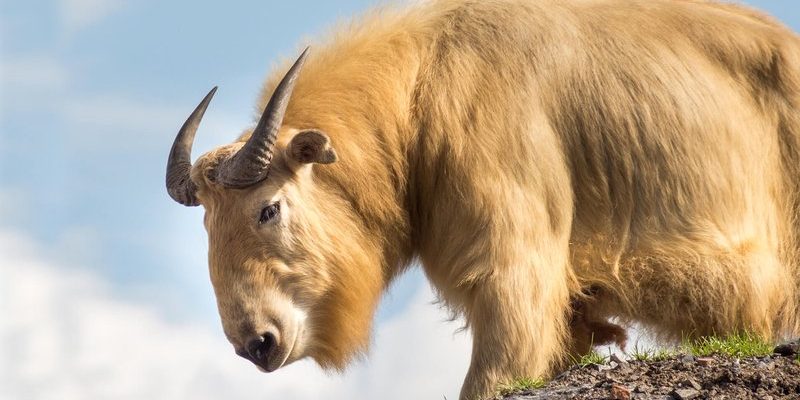
Now, you might wonder why understanding the takin’s role in its ecosystem matters. Just like every piece of a puzzle is vital to see the complete picture, the takin is a key player in its habitat. By grazing on various plants, it not only helps maintain plant diversity but also supports other species within its ecosystem. Let’s dive deeper into how this remarkable animal interacts with its surroundings and why it’s crucial for the health of its environment.
Understanding the Takin: An Overview
The takin (Budorcas taxicolor) belongs to the Bovidae family, which includes animals like goats and sheep. With their hefty bodies, thick fur, and distinctive curved horns, takins are built for the cold, mountainous regions they call home. They can weigh up to 600 pounds and stand about four feet tall at the shoulder. But don’t let their size intimidate you; these animals are primarily herbivorous, grazing on the tender vegetation that grows in their habitat.
These gentle giants are social creatures, often found in groups. Living in herds provides safety in numbers, especially considering the predators that lurk in their mountainous homes. When you think about the dynamics of their herds, it’s fascinating to see how they interact, communicate, and establish social hierarchies. Their social structure not only helps protect them but also contributes to the overall balance in their ecosystem.
The Takin’s Grazing Habits
Grazing is one of the most vital activities the takin participates in, and it has a profound impact on its ecosystem. Takins primarily feed on grasses, shrubs, and leaves, using their strong jaws to break down tough plant material. As they graze, they play a role similar to that of a lawnmower, keeping plant growth in check. This process helps to prevent any one species from overtaking the landscape, ensuring that a variety of plants can thrive.
Here’s the thing: when takins graze, they don’t just benefit themselves; they help maintain the health of their entire ecosystem. By promoting plant diversity, they provide food and habitat for countless other species. For example, birds may nest in the shrubs that takins help maintain, while smaller animals can find shelter among the diverse undergrowth. So, when you see a takin munching away, remember that it’s not just feeding itself—it’s supporting a whole community of life.
Seed Dispersal: A Hidden Contribution
You might be surprised to learn that takins also play an important role in seed dispersal. As they graze, they consume seeds along with their food. Not all these seeds are digested; some pass through their systems intact. When takins move from one area to another, they unknowingly drop these seeds in new locations through their droppings. This process is essential for the spread of various plant species, contributing to forest regeneration and diversity.
Imagine planting a garden and then having someone else come along and help you spread the seeds. It’s a bit like that! By helping other plants grow in new areas, takins make it possible for ecosystems to become more resilient. Forests that rely on healthy plant diversity are better equipped to withstand changes like climate fluctuations, pests, and diseases.
The Takin’s Role in the Food Chain
In addition to being grazers, takins are part of the food chain in their ecosystems. While they primarily feed on vegetation, they are also prey for larger predators, such as snow leopards and wolves. This predator-prey relationship is vital for maintaining balance in the ecosystem.
Predators help control takin populations, preventing overgrazing and the depletion of plant life. When there’s a healthy balance between takins and their predators, the ecosystem remains stable. If takin populations grow too large, they could consume too much vegetation, leading to habitat degradation. On the flip side, if their numbers are too low, it can disrupt the food chain and starve the predators reliant on them.
Conservation Challenges for Takins
Despite their importance, takins face several conservation challenges. Habitat loss due to deforestation and human encroachment is one of the most significant threats to their survival. As more land is cleared for agriculture or development, takins struggle to find the space and resources they need to thrive. This loss not only affects the takin but also the many species that depend on a healthy ecosystem.
Additionally, hunting—whether for sport or traditional medicine—has impacted takin populations in some areas. Conservation efforts are crucial to ensure that this remarkable species continues to contribute to its ecosystem. Protected areas and wildlife reserves play a vital role in preserving their habitats and ensuring their survival for future generations.
The Importance of Wildlife Corridors
One fascinating solution to help takins and other wildlife is the establishment of wildlife corridors. These are protected areas that connect different habitats, allowing animals to move safely between them. For takins, corridors can be crucial for finding food, mating opportunities, and avoiding predators.
Think of it like a highway for wildlife—enabling them to travel without facing human-made barriers like roads or developments. By creating safe passageways, we can help maintain healthy takin populations and the ecosystems they support. It’s a win-win for both the animals and the environment.
The takin may not be the most well-known animal in the world, but its role in its ecosystem is invaluable. From maintaining plant diversity through grazing to contributing to the seed dispersal that supports forest regeneration, these magnificent creatures are integral to their environment. Their place in the food chain helps maintain balance, ensuring that everything from plants to predators can thrive.
As we learn more about the takin and the challenges it faces, it’s essential to recognize the impact of our actions on wildlife and their habitats. By supporting conservation efforts and respecting the natural world, we can help ensure that the takin continues to play its vital role in its ecosystem for years to come.

